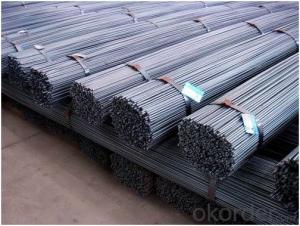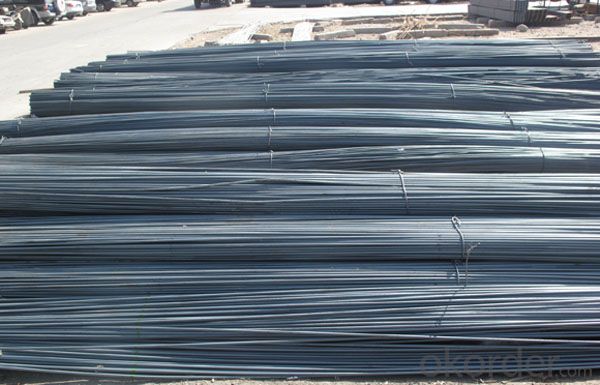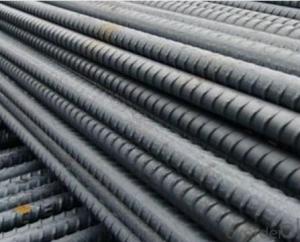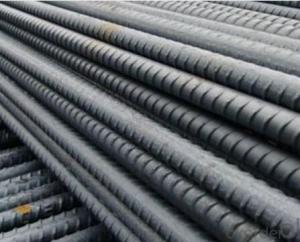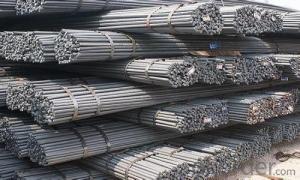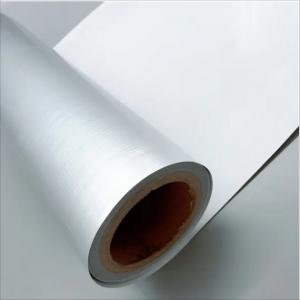Reinforcement Bar Sizes - Hot Rolled Steel Deformed Steel Bar Debar / Rebar KS BS HRB400 HRB500
- Loading Port:
- Tianjin
- Payment Terms:
- TT or LC
- Min Order Qty:
- 24 m.t.
- Supply Capability:
- 30000 m.t./month
OKorder Service Pledge
OKorder Financial Service
You Might Also Like
Product Description:
OKorder is offering Hot Rolled Steel Deformed Steel Bar (Debar / Rebar)KS BS HRB400 at great prices with worldwide shipping. Our supplier is a world-class manufacturer of steel, with our products utilized the world over. OKorder annually supplies products to European, North American and Asian markets. We provide quotations within 24 hours of receiving an inquiry and guarantee competitive prices.
Product Applications:
Hot Rolled Steel Deformed Steel Bar (Debar / Rebar)KS BS HRB400 are ideal for structural applications and are widely used in the construction of buildings and bridges, and the manufacturing, petrochemical, and transportation industries.
Product Advantages:
OKorder's Hot Rolled Steel Deformed Steel Bar (Debar / Rebar)KS BS HRB400 are durable, strong, and resist corrosion.
Main Product Features:
· Premium quality
· Prompt delivery & seaworthy packing (30 days after receiving deposit)
· Corrosion resistance
· Can be recycled and reused
· Mill test certification
· Professional Service
· Competitive pricing
Product Specifications:
Commodity: Mild Steel Flat Bar
Standard: GB;JIS
Material: Q195-235;SS400
Brand name: FLATSPACE
Origin place: China
Thickness: 3mm-30mm
Width:20mm-200mm
Length: Max 12m
Certification: SGS/BV
Chemical composition of Q235
Standard | GB | HRB400 | |
Diameter | 6mm,8mm,10mm,12mm,14mm,16mm,18mm,20mm, 22mm,25mm,28mm,32mm,36mm,40mm,50mm | ||
Length | 6M, 9M,12M or as required | ||
Place of origin | Hebei, China mainland | ||
Advantages | exact size, regular package, chemical and mechanical properties are stable. | ||
Type | Hot rolled deformed steel bar | ||
Brand name | DRAGON | ||
Diameter(mm) | Section area (mm²) | Mass(kg/m) | Weight of 12m bar(kg) |
6 | 28.27 | 0.222 | 2.664 |
8 | 50.27 | 0.395 | 4.74 |
10 | 78.54 | 0.617 | 7.404 |
12 | 113.1 | 0.888 | 10.656 |
14 | 153.9 | 1.21 | 14.52 |
16 | 201.1 | 1.58 | 18.96 |
18 | 254.5 | 2.00 | 24 |
20 | 314.2 | 2.47 | 29.64 |
22 | 380.1 | 2.98 | 35.76 |
25 | 490.9 | 3.85 | 46.2 |
28 | 615.8 | 4.83 | 57.96 |
32 | 804.2 | 6.31 | 75.72 |
36 | 1018 | 7.99 | 98.88 |
40 | 1257 | 9.87 | 118.44 |
50 | 1964 | 15.42 | 185.04 |
Packaging & Delivery of Hot Rolled Hot Rolled Steel Deformed Steel Bar (Debar / Rebar)KS BS HRB400
1. Packing: it is nude packed in bundles by steel wire rod
2. Bundle weight: not more than 3.5MT for bulk vessel; less than 3 MT for container load
3. Marks:
Color marking: There will be color marking on both end of the bundle for the cargo delivered by bulk vessel. That makes it easily to distinguish at the destination port.
Tag mark: there will be tag mark tied up on the bundles. The information usually including supplier logo and name, product name, made in China, shipping marks and other information request by the customer.
If loading by container the marking is not needed, but we will prepare it as customer request.
4. Transportation: the goods are delivered by truck from mill to loading port, the maximum quantity can be loaded is around 40MTs by each truck. If the order quantity cannot reach the full truck loaded, the transportation cost per ton will be little higher than full load.
5. Delivered by container or bulk vessel
FAQ:
Q1: Why buy Materials & Equipment from OKorder.com?
A1: All products offered byOKorder.com are carefully selected from China's most reliable manufacturing enterprises. Through its ISO certifications, OKorder.com adheres to the highest standards and a commitment to supply chain safety and customer satisfaction.
Q2: How do we guarantee the quality of our products?
A2: We have established an advanced quality management system which conducts strict quality tests at every step, from raw materials to the final product. At the same time, we provide extensive follow-up service assurances as required.
Q3: How soon can we receive the product after purchase?
A3: Within three days of placing an order, we will begin production. The specific shipping date is dependent upon international and government factors, but is typically 7 to 10 workdays.
Q4: What makes stainless steel stainless?
A4: Stainless steel must contain at least 10.5 % chromium. It is this element that reacts with the oxygen in the air to form a complex chrome-oxide surface layer that is invisible but strong enough to prevent further oxygen from "staining" (rusting) the surface. Higher levels of chromium and the addition of other alloying elements such as nickel and molybdenum enhance this surface layer and improve the corrosion resistance of the stainless material.
Q5: Can stainless steel rust?
A5: Stainless does not "rust" as you think of regular steel rusting with a red oxide on the surface that flakes off. If you see red rust it is probably due to some iron particles that have contaminated the surface of the stainless steel and it is these iron particles that are rusting. Look at the source of the rusting and see if you can remove it from the surface.
Images:


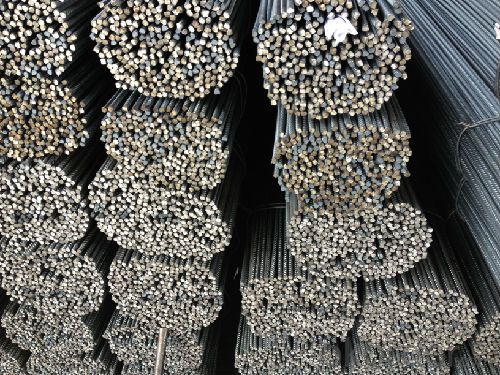
- Q:Are steel rebars suitable for use in structures with aggressive soil conditions?
- Steel rebars are generally suitable for use in structures with aggressive soil conditions. However, it is important to consider the specific characteristics of the soil and the potential impact it may have on the rebars. Aggressive soil conditions typically involve high levels of moisture, acidity, or corrosive substances. In such cases, the rebars may be at risk of corrosion, which can weaken the structural integrity of the entire construction. To mitigate the risk of corrosion, various measures can be taken. One common method is to use corrosion-resistant steel rebars, such as stainless steel or epoxy-coated rebars. These materials provide an extra layer of protection against aggressive soil conditions. Furthermore, proper design and construction techniques can also help to minimize the impact of aggressive soil conditions on the rebars. Adequate drainage systems, waterproofing measures, and protective coatings can all be implemented to prevent the soil from directly contacting the rebars. It is crucial to consult with structural engineers and experts in soil science to assess the suitability of steel rebars in structures with aggressive soil conditions. They can provide valuable insights and recommendations to ensure the longevity and safety of the structure.
- Q:Is cold-rolled ribbed steel bar thread steel?
- I haven't heard of cold-rolled steel. Cold rolling is called thin plate
- Q:What is the content ratio of the screw steel and manganese steel?
- The standard type of high manganese steel Mn13 steel and Hadfield steel, high manganese steel castings in China National Standard (GB/T5680-1998) grade: ZGMn13-1, ZGMn13-2, ZGMn13-3, ZGMn13-4, ZGMn13-5; ASTM (ASTMA128/A128M-1993) standard austenitic manganese steel casting steel are: ASTM-A (UNS-J9110.
- Q:What are the guidelines for the proper spacing of steel rebars in slabs?
- The guidelines for the proper spacing of steel rebars in slabs are crucial to ensure the structural integrity and strength of the concrete slab. Here are the general guidelines to follow: 1. Rebar Diameter: The diameter of the steel rebar should be determined based on the load and design requirements. Common rebars sizes range from 6mm to 32mm. 2. Spacing: The spacing between rebars is determined by the thickness of the slab and the design specifications. As a general rule, the spacing should not exceed three times the slab thickness. For example, if the slab thickness is 150mm, the maximum spacing between rebars should be 450mm. 3. Edge Distance: The distance between the rebar and the edge of the slab is also crucial. The minimum edge distance should be at least 50mm to prevent cracking and ensure proper load distribution. 4. Clear Cover: The clear cover refers to the distance between the rebar and the surface of the slab. It is essential to provide sufficient clear cover to protect the rebar from corrosion. The clear cover requirements vary depending on the environmental conditions, but commonly range from 20mm to 40mm. 5. Reinforcement Ratio: The reinforcement ratio is the amount of steel reinforcement used per unit area of the slab. This ratio is determined by the load requirements and the design specifications. Typically, the reinforcement ratio ranges from 0.5% to 2%. 6. Lap Splicing: In cases where the length of the rebar is insufficient, lap splicing is required. The lap length should be determined based on the rebar diameter, grade, and design requirements. 7. Placement: The rebars should be placed accurately and securely inside the slab formwork. Proper alignment and placement ensure that the rebars are positioned correctly to resist the anticipated loads. It is important to note that these guidelines are general and may vary depending on the specific project, structural design, and local building codes. It is recommended to consult with a structural engineer or refer to the relevant building codes and standards for precise guidelines specific to your project.
- Q:How do steel rebars distribute loads in concrete structures?
- The reinforcement and increased tensile strength provided by steel rebars allow for the distribution of loads in concrete structures. A grid-like pattern is typically used to place the rebars in the concrete, creating a network of support throughout the structure. This network helps evenly distribute external loads, such as the weight of the building or the force of an earthquake, preventing the concrete from cracking or failing under stress. To effectively distribute loads, the rebars transfer tensile forces to the surrounding concrete. While concrete is strong in compression, it is weak in tension. The rebars act as reinforcement, resisting the tensile forces and preventing cracks in the concrete. When a load is applied to the structure, the rebars bear a portion of the load and distribute it to adjacent rebars and the surrounding concrete, increasing the overall strength and stability of the structure. The spacing and diameter of the rebars also influence load distribution in concrete structures. Proper spacing ensures even distribution of the load, minimizing the risk of localized stress concentration. The diameter of the rebars is also important, as larger diameter rebars can withstand higher loads and provide more reinforcement. In addition to load distribution, steel rebars help control crack propagation in the concrete. When cracks occur, the rebars transfer stress around the cracked area, preventing them from spreading and maintaining the structural integrity of the concrete. In summary, steel rebars are essential for distributing loads in concrete structures. They provide reinforcement, increase tensile strength, and control crack propagation. Proper placement and sizing of the rebars ensure even load distribution, enhancing the durability and longevity of the structure.
- Q:How do steel rebars improve the durability of concrete structures?
- Concrete structures can be made more durable in various ways through the use of steel rebars. Firstly, steel rebars act as reinforcement, adding strength and stability to the structure. When combined with concrete, the high tensile strength of steel rebars helps resist cracking and prevent collapse under heavy loads or seismic activities. Secondly, steel rebars assist in controlling the formation and spread of cracks in concrete structures. Concrete is strong in compression but weak in tension, making it prone to cracking under tensile forces. By strategically placing steel rebars within the concrete, cracks are minimized and prevented from spreading, thereby improving the overall durability of the structure. Furthermore, steel rebars enhance the resistance of concrete structures against corrosion. The highly alkaline nature of concrete forms a protective layer around the steel rebars, preventing rust. This corrosion resistance ensures the rebars maintain their structural integrity over time, reducing the risk of deterioration and enhancing the longevity of the concrete structure. Moreover, steel rebars also increase the fire resistance of concrete structures. With their high melting point, steel rebars can withstand high temperatures, preventing the concrete from losing its structural integrity during a fire. This additional fire resistance ensures the stability and safety of the concrete structure in case of a fire, further enhancing its durability. In conclusion, the inclusion of steel rebars significantly enhances the durability of concrete structures by providing added strength, controlling cracks, improving corrosion resistance, and increasing fire resistance. These advantages contribute to the longevity and safety of concrete structures, making them more reliable and sustainable in the long term.
- Q:Can steel rebars be used in structures with limited construction technology?
- Indeed, structures with limited construction technology can still make use of steel rebars. Steel rebars are frequently employed in construction as a means of reinforcing concrete structures, providing them with strength and longevity. They possess versatility, enabling their usage in a variety of structure types such as buildings, bridges, and dams. Even in regions with limited construction technology, the utilization of steel rebars remains a feasible option. The fundamental procedure involves the bending and cutting of rebars to the necessary sizes and shapes, subsequently placing them within the concrete forms prior to pouring the concrete. This process can be executed with basic tools and equipment commonly found on construction sites with restricted resources. Moreover, the availability of steel rebars in various sizes and grades allows for flexibility in design and construction, rendering them suitable for a wide array of structures. By employing steel rebars, concrete structures can withstand diverse loads and forces, thereby enhancing their overall strength and durability. Although advanced construction technology may enhance the efficiency and precision of the construction process, it is not a prerequisite for employing steel rebars. Through proper training and expertise, construction workers can effectively utilize steel rebars in structures, even in situations where technology is limited, in order to create secure and dependable structures.
- Q:How do steel rebars affect the shrinkage and creep of concrete?
- Concrete's shrinkage and creep behavior can be significantly influenced by steel rebars. Shrinkage refers to the concrete's volume reduction caused by moisture loss during drying, while creep refers to its time-dependent deformation under sustained load. The inclusion of steel rebars helps mitigate concrete shrinkage. As the concrete shrinks, the rigid rebars resist this reduction and provide restraint. This restraint minimizes volume changes and reduces cracking caused by shrinkage. Moreover, the tensile strength of rebars allows them to distribute stress and prevent localized cracking, further minimizing the impact of shrinkage on overall concrete performance. Regarding creep, steel rebars can increase concrete's deformation. This is because the rebars introduce additional stress and strain, leading to greater creep deflections. However, compared to factors like mix design, water-cement ratio, and curing conditions, the effect of steel rebars on creep is generally considered minor. It's important to note that proper reinforcement layout design and detailing can minimize the impact of steel rebars on shrinkage and creep. Adequate spacing, rebars cover, and reinforcement ratios optimize both concrete and rebars' performance. Additionally, the use of supplementary cementitious materials like fly ash or silica fume can reduce shrinkage and mitigate creep's impact. In summary, steel rebars are crucial in minimizing concrete's shrinkage-related issues through restraint and stress distribution. Though they may increase creep deformation, their impact is generally minor compared to other factors. Proper reinforcement design and detailing optimize concrete and steel rebars' performance in terms of shrinkage and creep.
- Q:What are the common myths and misconceptions about steel rebars?
- There are several common myths and misconceptions about steel rebars that are important to address in order to have a better understanding of their properties and uses. One common myth is that steel rebars are easily susceptible to rust. While it is true that steel can rust, rebars are typically made with corrosion-resistant materials such as epoxy-coated or galvanized steel. These coatings provide a protective layer that helps prevent rusting, making rebars highly durable and long-lasting even in harsh environments. Another misconception is that larger rebars always provide stronger reinforcement. The size or diameter of a rebar does play a role in its strength, but it is not the only factor. The grade or quality of the steel used, as well as its proper placement within the concrete structure, are equally important. Engineers carefully calculate the required strength and spacing of rebars based on the specific load and structural requirements. Some people believe that steel rebars are only used in large-scale construction projects. However, rebars are commonly used in various construction applications, ranging from residential buildings to bridges and highways. Their versatility and strength make them an essential component in reinforcing concrete structures of all sizes. There is also a misconception that steel rebars increase the risk of electrical conductivity. While steel is a conductor of electricity, the presence of rebars in a concrete structure does not significantly increase the risk of electrical hazards. Concrete acts as an insulator, and rebars are typically encased within it, reducing the likelihood of contact with electrical currents. Lastly, there is a myth that steel rebars are expensive and unaffordable for most construction projects. In reality, the cost of rebars varies depending on factors such as the grade, size, and quantity required. There are various options available to suit different budgets and project needs. Additionally, the long lifespan and durability of steel rebars make them a cost-effective choice in the long run. In conclusion, it is important to dispel the myths and misconceptions surrounding steel rebars. Understanding their corrosion resistance, the role of size and placement, their versatility, the electrical conductivity risks, and their cost-effectiveness will help in making informed decisions when it comes to reinforcing concrete structures.
- Q:What is the standard size of steel rebars?
- The standard size of steel rebars varies depending on the application, but common sizes range from 6mm to 40mm in diameter.
1. Manufacturer Overview |
|
|---|---|
| Location | |
| Year Established | |
| Annual Output Value | |
| Main Markets | |
| Company Certifications | |
2. Manufacturer Certificates |
|
|---|---|
| a) Certification Name | |
| Range | |
| Reference | |
| Validity Period | |
3. Manufacturer Capability |
|
|---|---|
| a)Trade Capacity | |
| Nearest Port | |
| Export Percentage | |
| No.of Employees in Trade Department | |
| Language Spoken: | |
| b)Factory Information | |
| Factory Size: | |
| No. of Production Lines | |
| Contract Manufacturing | |
| Product Price Range | |
Send your message to us
Reinforcement Bar Sizes - Hot Rolled Steel Deformed Steel Bar Debar / Rebar KS BS HRB400 HRB500
- Loading Port:
- Tianjin
- Payment Terms:
- TT or LC
- Min Order Qty:
- 24 m.t.
- Supply Capability:
- 30000 m.t./month
OKorder Service Pledge
OKorder Financial Service
Similar products
New products
Hot products
Hot Searches
Related keywords
